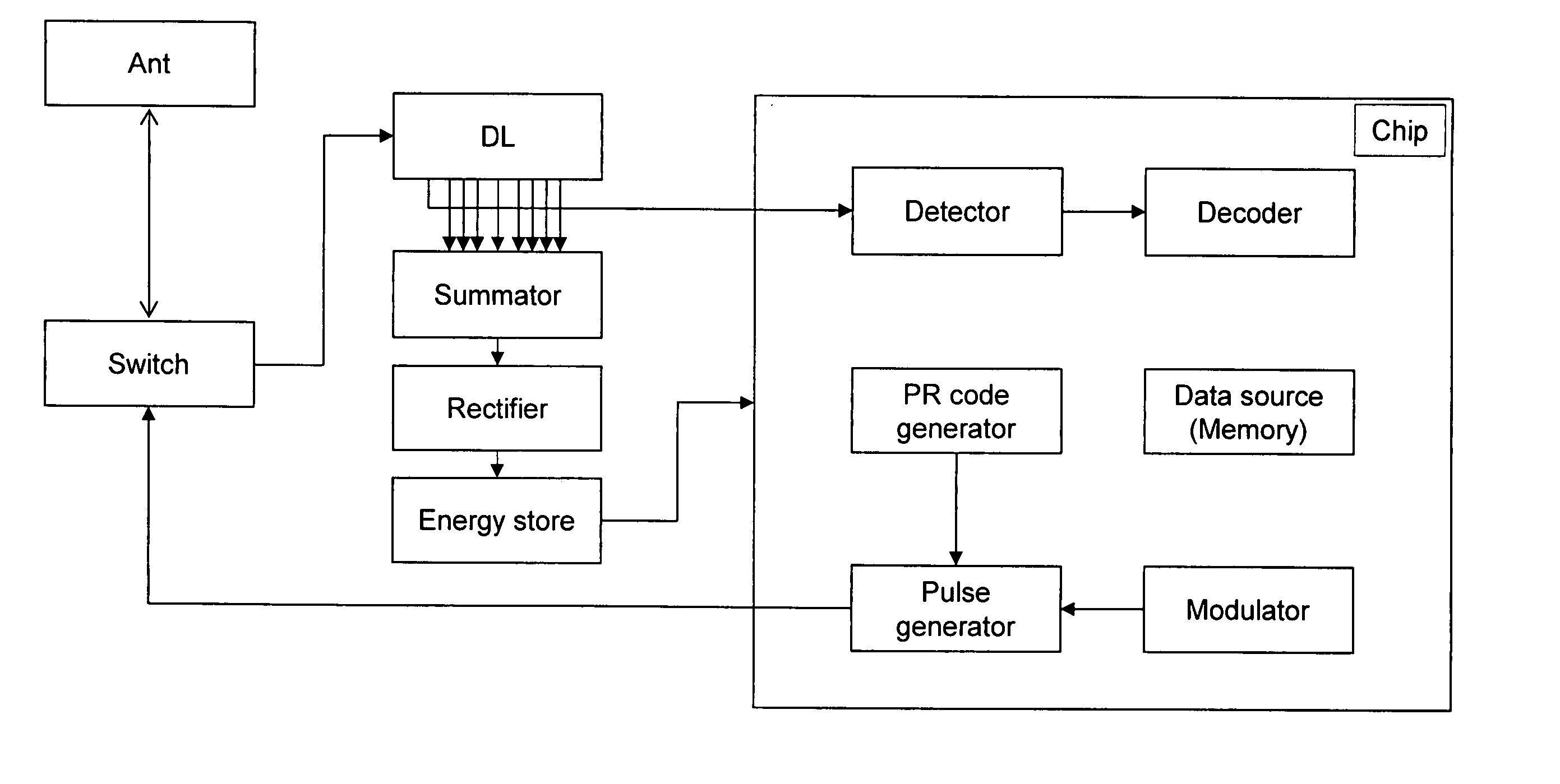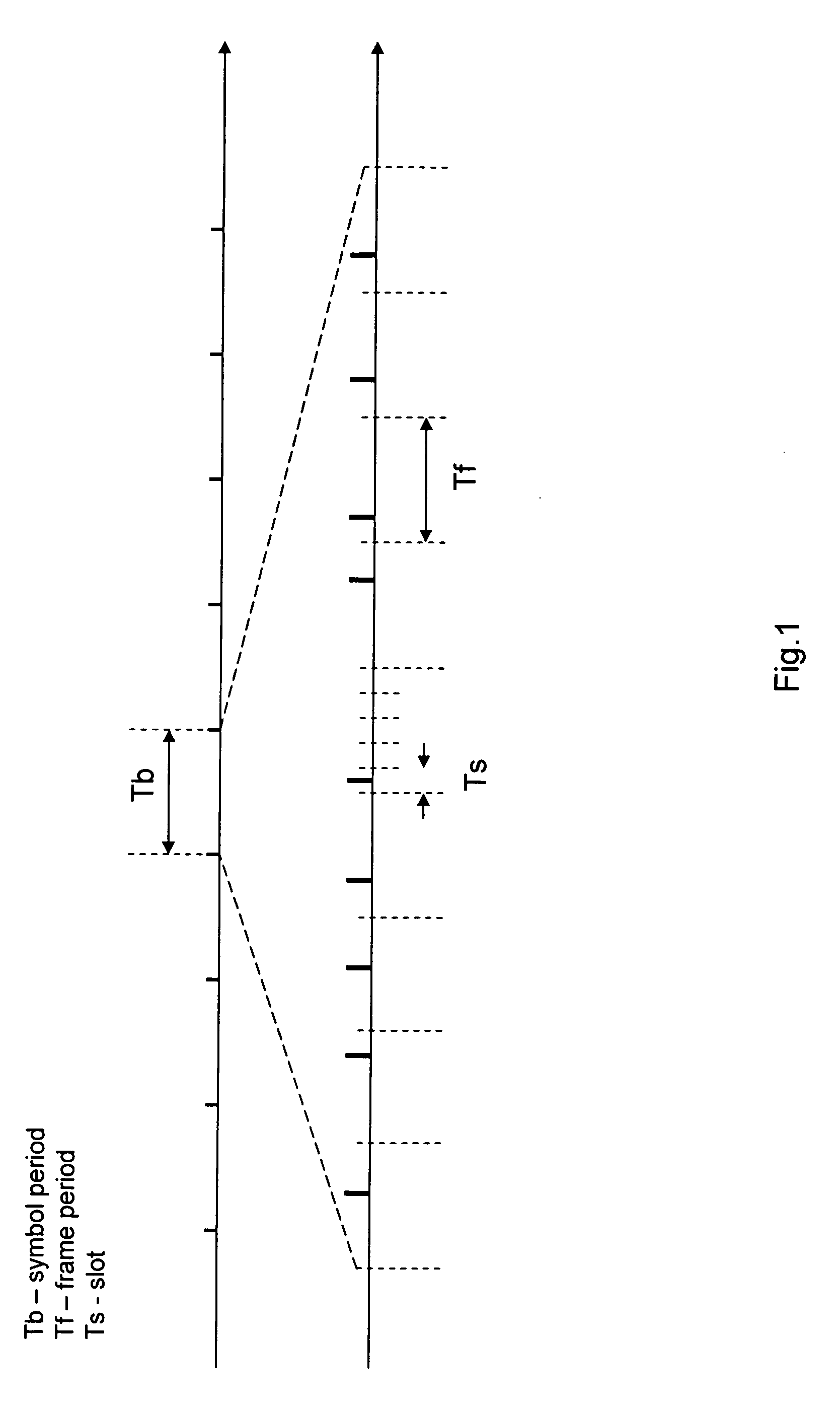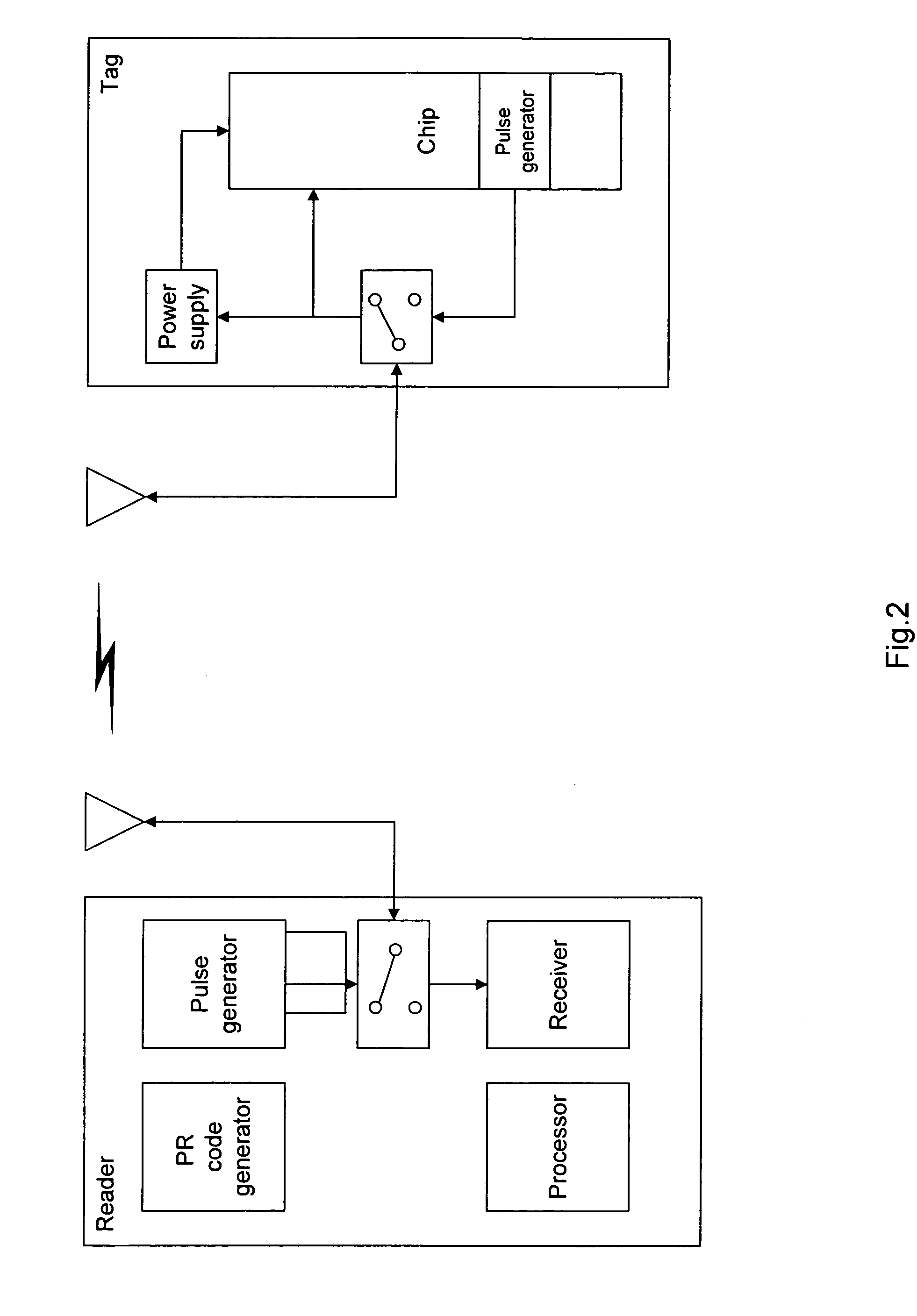Carrierless RFID system
a carrierless, impulsive technology, applied in the direction of electrical signalling details, mechanical actuation of burglar alarms, instruments, etc., can solve the problems of difficult to achieve long operational distance between transponder and reader in passive transponder, low circuit efficiency of tag thereby, and short range of passive transponder, etc., to achieve high efficiency and utilize the available power
- Summary
- Abstract
- Description
- Claims
- Application Information
AI Technical Summary
Benefits of technology
Problems solved by technology
Method used
Image
Examples
Embodiment Construction
[0032] In this disclosure the term ‘carrierless’ is used to emphasize the difference to the general RFID systems which use a carrier to transfer power to a tag and to communicate. The term ‘carrierless RFID’ is used here as a synonym for ‘impulse RFID’ to emphasize the difference to general RFID systems which use a continuous wave signals as opposed to the impulse signals.
[0033] The present invention is a method and an apparatus to use carrierless (impulse) signals for energizing remote passive or active transponders (tags) and for a communication link between a reader and the transponders. The reader's transceiver generates very short high power pulses to transmit them to the transponder which receives and stores the pulse energy in an energy store on the transponder. At the transponder the power pulse signal is compressed by a matched filter and rectified. Information to be transmitted from the reader to the transponder and from the transponder to the reader can be added to the d...
PUM
 Login to View More
Login to View More Abstract
Description
Claims
Application Information
 Login to View More
Login to View More - R&D
- Intellectual Property
- Life Sciences
- Materials
- Tech Scout
- Unparalleled Data Quality
- Higher Quality Content
- 60% Fewer Hallucinations
Browse by: Latest US Patents, China's latest patents, Technical Efficacy Thesaurus, Application Domain, Technology Topic, Popular Technical Reports.
© 2025 PatSnap. All rights reserved.Legal|Privacy policy|Modern Slavery Act Transparency Statement|Sitemap|About US| Contact US: help@patsnap.com



